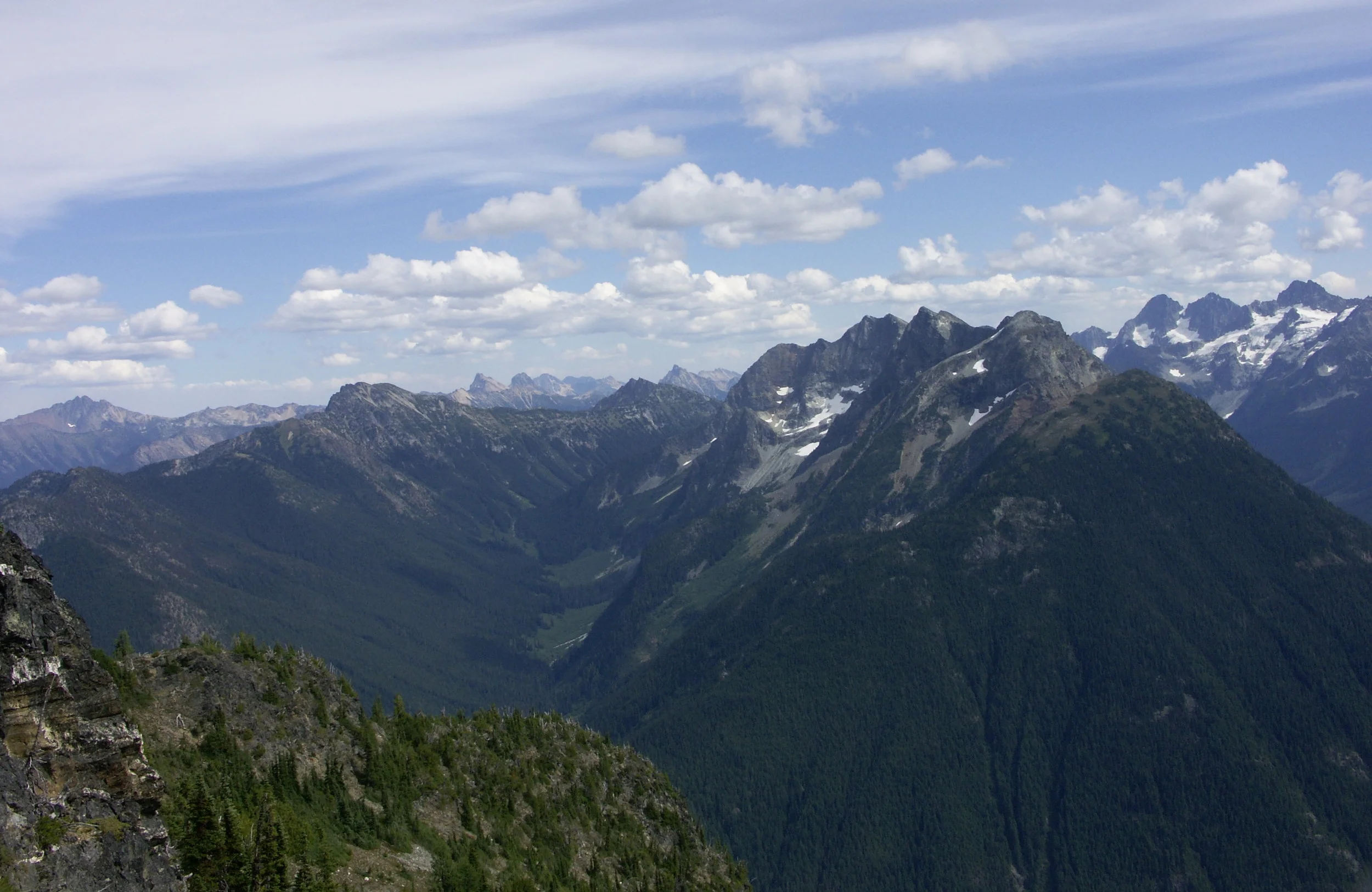A common thread through my research is the ultimate goal of better understanding Earth history and Earth system processes. These are a few recent and in-progress projects.
North Cascades, Washington
The North Cascades metamorphic core in northern Washington, USA, is the southern terminus of the Coast Plutonic Complex, and represents the exhumed root of a Cretaceous continental magmatic arc. Using U-Pb dates of zircons in igneous intrusions with solid-state deformation throughout the metamorphic core of the North Cascades, I have worked with Sam Bowring (MIT, thesis advisor) and Bob Miller (SJSU) to demonstrate a previously unrecognized widespread episode of Eocene magmatism that follows a period of Paleocene quiescence. Three nonmarine basins contain volcanic tuffs with depositional ages that overlap with the timing of magmatism in the metamorphic core and 40Ar-39Ar cooling ages. Taken together, available age constraints imply a dynamic relationship between rapid basin development and exhumation of the North Cascades core, consistent with a degree of coupling between the upper and lower crust during the major plate transition to the modern Cascades arc.
Selected publications:
McLean (PhD thesis), Miller et al. (2009, 2016), Gordon et al. (2010)
High Plains Aquifer
The Ogallala Formation is the major source of water for the High Plains in Western Kansas and beyond. Working with Greg Ludvigson and John Smith at the Kansas Geological Survey, Andreas Moller and master's students Jason Hallman (graduated with honors) in Brian Sitek (in progress), we have begun to put together the first high-precision chronostratigraphic framework for the Ogallala Formation. U-Pb geochronology of lenticular ashes sourced from Yellowstone Hotspot Track eruptions and detrital zircons shows how major depositional patterns changed over millions of years.
Results so far:
Jason Hallman MS thesis, Hallman et al. (2016), Sitek et al. (2016), etc.
U and Th partitioning in zircon and melts
Working with Mike Krawczynski of the ESPM group at Washington University in St. Louis, we will synthesize zircon from a known composition and imposed temperature/pressure/oxygen fugacity to experimentally determine the relative partitioning behavior of uranium and thorium. This information is the key to the "Th correction" for initial disequilibrium in the 238U decay chain that can be up to 100,000 years. Our results will help clear up the biggest unknown in dating young zircons, which are useful both for studying recent geological events and for investigating geological processes that occur at the several-thousand-year uncertainties achievable by modern analytical techniques.





